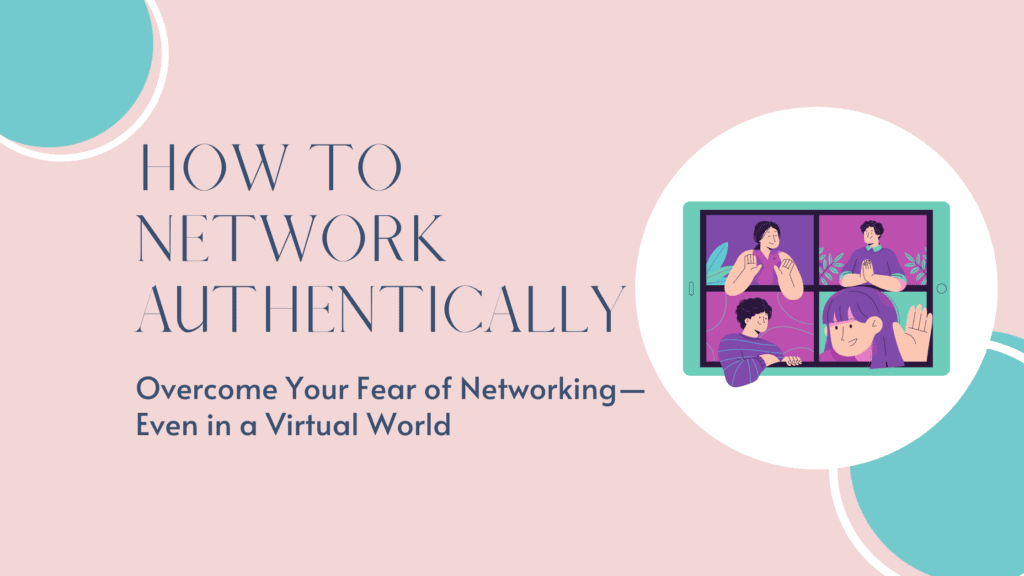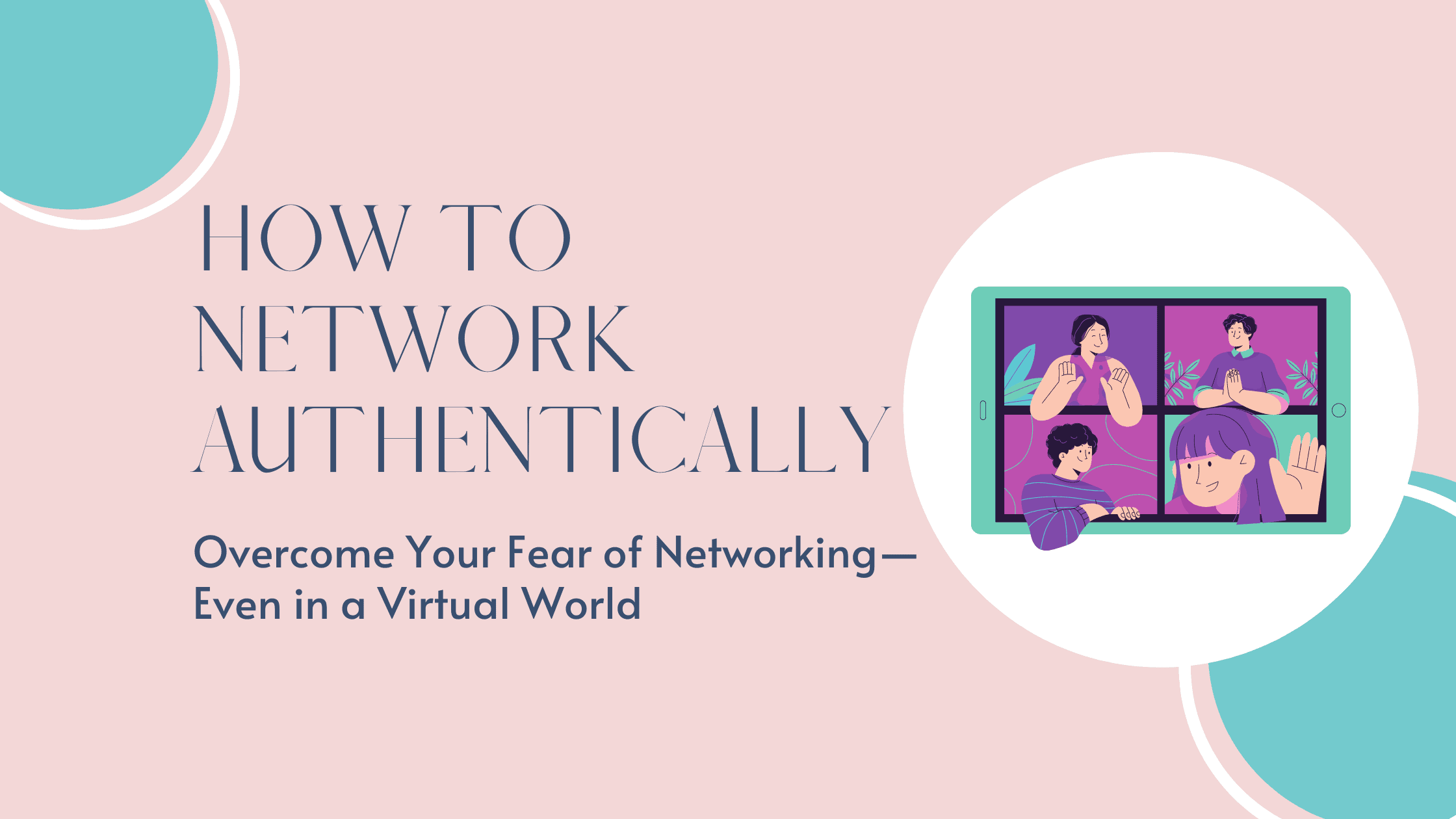
Overcome Your Fear of Networking—Even in a Virtual World
Many people rank networking near public speaking as their most anxiety-inducing activity. The potential awkwardness of virtual social interactions has only increased the fear of networking for many. Yet, most of us recognize the importance of networking for our careers.
Recognize Networking for What It Is
But networking can help in many areas of our lives besides our professions. Just look at your social circle. Have you ever asked a neighbor for a recommendation when you need some repairs done on your home? Often, a worker’s van or truck in your driveway will elicit questions from neighbors on your experience with the worker or the company. And soon, you notice that same company’s vehicles parked in driveways on your street—even around your neighborhood. This, too, is a form of networking.
The same type of networking happens when you ask friends for pediatrician or daycare recommendations or when you refer a friend for a job opportunity at work. Chances are you’ve been effortlessly and happily networking for most of your life and simply haven’t recognized it as networking. It’s a give-and-take of helpful information interspersed with simple conversations and interactions.
With the pandemic, our opportunities to effortlessly plug into our social circles for information and recommendations have become more cumbersome. If you’re fortunate, you have a group of friends you can text when you need of information, recommendations, support—or even a new recipe to try. You may even use social media to ask for recommendations from friends and contacts.
Surrounding yourself with the right people whether in your personal or professional circle can help you succeed in life and overcome any number of challenges, from finding a plumber to finding a job.
Surrounding yourself with the right people whether in your personal or professional circle can help you succeed in life and overcome any number of challenges, from finding a plumber to finding a job.
Focus on the Positives of Networking & Manage Expectations
So, why is networking effortless in some aspects of our lives yet so fear-inspiring in others? Like most situations, it all depends on our mental attitude. If you view chatting with your friendly neighbor at the mailbox as a low-risk situation, you are more likely to take a few moments to engage in conversation.
On the other hand, if your neighbor has a history of engaging you in long conversations at inopportune times or expressing personal views on politics that make you uncomfortable, your view of chatting by the mailbox has become high-risk and you’re less likely to stop and chat.
Similarly, if you go into a networking opportunity with low expectations and an assumption of a worst-case scenario, you’re less likely to participate or even enjoy it. Instead approaching networking as nothing more than an opportunity to stay connected to like-minded people, learn something new, or help solve a common problem can drastically change your networking mindset and level of success.
As this Harvard Business Review article points out, “…everyone can choose which motivational focus to bring to networking. Concentrate on the positives—how it’s going to help you boost the knowledge and skills that are needed in your job—and the activity will begin to seem much more worthwhile.”
In their Harvard Business Review article, “How to Learn to Love Networking,” writers Tiziana Casciaro, Francesca Gino, and Maryam Kouchaki cited their study of people’s views of networking, “Many people find professional networking so distasteful that it makes them feel morally and physically dirty. In a controlled experiment, we asked 306 adults working at various organizations to write about times when they engaged either in networking for professional advancement or in social networking to make friends…although most participants viewed networking to socialize and make friends as positive, they saw networking to enhance their careers as distinctly negative. Their negativity was not simply dislike or discomfort. It was a deeper feeling of moral contamination and inauthenticity.”
Approaching networking with too high of an expectation like making a sale or meeting and securing your dream mentor can be detrimental to your networking success and people’s willingness to network with you. You may very well come on too strongly.
Instead, take your time—whether on social media or in person—to get to know the ‘room.’ Show your interest in others and what they’re sharing. Participate in conversations. Be positive. And be authentic.
Assess Your Connections and Connection Methods
If you’re unclear on where to start, assess your network connections. Those may be on LinkedIn, Facebook, and/or your company’s network. They may be coworkers, colleagues, neighbors, and friends. Think of those individuals who have come to you for help or who have helped you. There is likely an established relationship there built on trust. Likely, you’ve had a variety of types of interactions with those individuals. You didn’t walk up to a stranger and immediately ask for their business or share your contact details with them. Rather, you likely exchanged pleasantries, occasionally delved into conversations with more substance, and shared news and highlights from your lives. These are likely valuable connections
You can do the same with your professional network. Review your connections, starting with those you already have a valuable relationship with. Make sure you remain connected with those individuals, whether by occasional text, email, instant message chat, or Zoom check-in.
Connecting with people on social media is also a great way to stay in touch. If your connections are active on social media, you’ll more likely know about significant events in their lives, professional milestones, and even social causes they support. You can even see what mutual connections you might have. See my post, “Tips for Expanding Your Network Even while Social Distancing,” for more in-depth tips.
Look for Opportunities to Interact
As you move on to new connections, connections outside your immediate circle, perhaps even to connections you’ve identified as strategic to your career or business, look for opportunities to interact naturally. Review their recent social media posts and if you find something noteworthy or interesting, tap that like button. It’s today’s virtual equivalent of a friendly wave to your neighbor as you pass by down the street. And it paves the way for future, more substantive, interactions.
While the pandemic has certainly made networking in person more problematic, it has given all of us a reason to reach out virtually. Whether you simply send a text or direct message to an acquaintance to check in or ask to connect on LinkedIn, letting people know you were thinking of them and hoping they are well is almost universally appreciated these days. Just don’t immediately follow up by asking for something. Remember: read the (virtual) room.
Nelida Ruiz is a marketing and business development consultant and coach helping business owners maximize thought leadership with blogs, articles, and social media. For more of her work visit www.nelidaruiz.com



